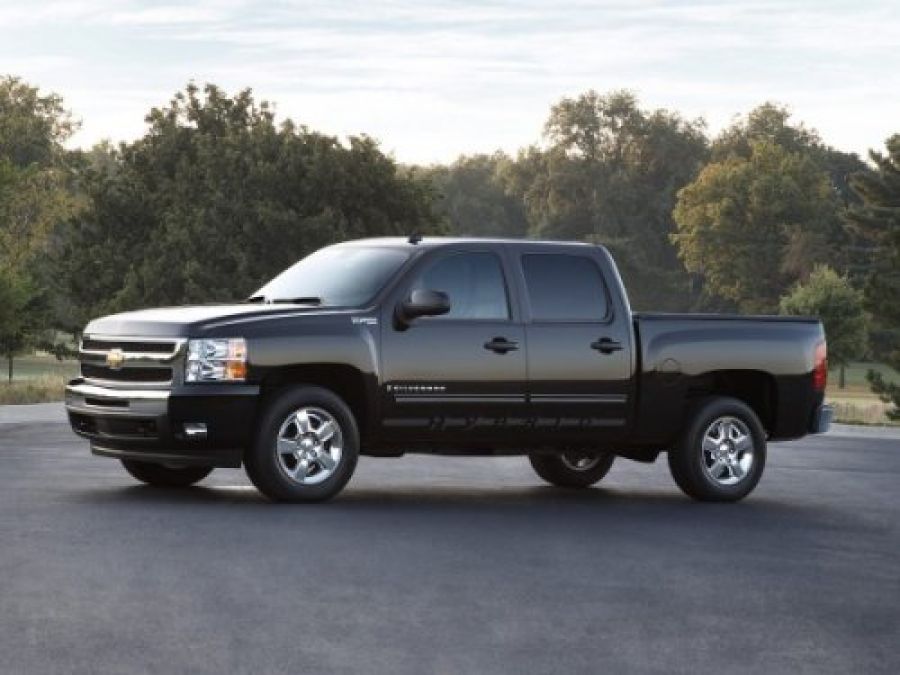Although they make up only a very small portion of the overall truck sales market (well under 1%), hybrids are gaining steam in terms of popularity amongst truck buyers. The early stigma of unreliability and poor performance is fading and truck owners are becoming more conscious of fuel usage and costs. Currently, General Motors is the only company producing hybrid pickup trucks for the work truck (heavy-duty) market, with variations of the Sierra and Silverado (GMC and Chevrolet brands respectively) being offered in hybrid drive trains.
Side-by-side comparisons of fuel usage (using EPA numbers) gives an average fuel economy boost of about 20% for these trucks when compared to their gasoline-only counterparts. For most work users, this is a bottom line booster. Of course, with hybrids, it all depends on what you own and how you use it. If you spend a lot of your time on the freeway, you won't get the kind of savings that others who drive primarily on slower roads (in city or back country).
So here are 2 hybrid options in work trucks, available right now:
Chevrolet Silverado 1500 Hybrid & GMC Sierra 1500 Hybrid
These are available as 2-wheel and 4-wheel drive (2WD/4WD) options in either extended or crew cab configuration. Both are short-box trucks made mostly for carrying gear and workers or pulling medium and lightweight trailers. Both two and four wheel drive options get 20mpg city, 23mpg highway with a 26 gallon fuel tank capacity. The fuel efficiency numbers assume no payload, of course, with the highway mileage suffering the most under load.
Both the Silverado and Sierra come in two trim levels starting at about $40,000 in 2WD and $43,000 for 4WD. They come standard with a 3.08 rear axle ratio, heavy-duty trailer-ready suspension package and hitch equipment, 2-stage multi-leaf springs on the rear, and use the Chevrolet Vortec 6.0-liter V8 SFI with variable valve timing (VVT) and a 4-speed automatic transmission. This means 332hp at peak RPMs. Maximum payload is half a ton (1,527lb), giving these trucks a GVWR of 7,100 pounds and a maximum trailer pull of 6,100lbs (12,000 GCWR). These numbers change slightly with the 4WD option, going to a GVWR of 7,300, a max trailering of 5,900, but retaining the GCWR of 12,000 due to the extra equipment installed (transfer case, etc.) for four wheel operation.
The cargo box is 69.3x62.5 inches length-width. Wheel housings take up some of that space, of course, giving a total cargo volume area of 53.2 cubic feet. The wheelbase of the 1500 series is 143.5 inches with a 9 inch frontal ground clearance and a 12.1 inch clearance at rear. Load floor height is a standard pickup measurement of 32.7 inches off the ground.
For hybrid electric pickup trucks for the work truck user, General Motors is the only option in the U.S. right now. Other companies, including Ford, have not made any suggestion that they'll be entering the market. Ford, of course, has the electric and compressed natural gas (CNG) option Transit Connect, and both Chevrolet and Ford offer Flex-fuel (E85 ethanol) trucks. Chrysler has hinted at a Dodge Ram Hybrid for 2015, which would likely have roughly the same capabilities as the above-listed 1500-series GM products, though Chrysler plans to make the Ram a plug-in hybrid (PHEV). This is all mostly because of a pre-bailout agreement with the U.S. Department of Energy and their 10-truck road test which is currently underway, as Chrysler otherwise dropped the Ram hybrid project after restructuring.





